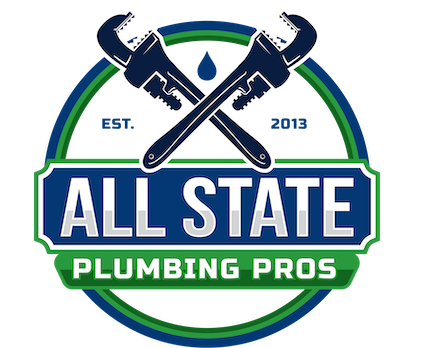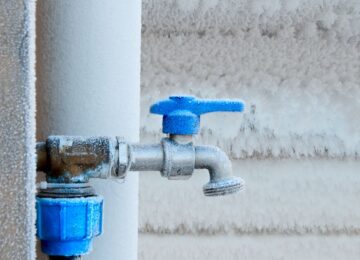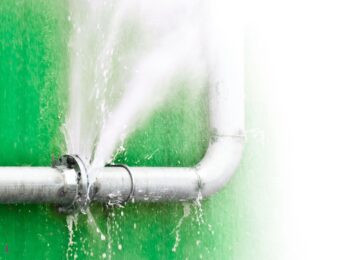When your well pump is not working, it can quickly interrupt your home’s access to clean, running water. Well pumps are a crucial part of many households’ water supply systems, pulling water from underground wells and delivering it to faucets, appliances, and irrigation systems. If the pump fails, you may notice low water pressure, a constantly running pump, or no water flow at all.
Understanding how a well pump system works and knowing the basics of troubleshooting can help you identify the source of the problem early. In some cases, you may be able to handle simple fixes yourself, while more complex pump issues will require professional assistance. This guide explains how to diagnose common well pump not working problems, maintain your water system, and prevent future failures.
Understanding Well Pumps
Well pumps play a vital role in delivering water to your home. They pull water from an underground aquifer and send it into a water pressure tank, which stores the water under pressure for consistent use.
The system turns the pump on and off automatically based on the air pressure inside the pressure tank. If the pressure drops too low, the pump starts running to replenish the tank; once the desired pressure is reached, the pump turns off.
There are several types of pumps, but submersible pumps are among the most common. Located at the bottom of the well, these pumps push water upward. Other types include jet pumps, which are mounted above ground and draw water up through suction. Proper installation quality, correct motor rating, and regular maintenance all play significant roles in how long a well pump lasts.
Pressure Tank and Switch
The pressure tank and pressure switch are essential components of the well pump system. They work together to regulate water pressure and control when the pump turns on and off.
A faulty pressure switch can cause several issues, such as the pump running continuously or failing to start at all. If the switch is corroded or clogged, it may send incorrect signals to the pump. Similarly, problems with the pressure tank’s air bladder can lead to irregular water pressure or cause the pump to cycle rapidly, wearing it out prematurely.
To keep these components functioning properly, inspect them regularly. Check for leaks, test the air pressure inside the tank, and watch for unusual fluctuations in water pressure. Addressing small problems early can prevent well pump failure and the need for costly service calls.
Troubleshooting Steps for Low Water Pressure
When you’re dealing with low water pressure or no water flow, it’s essential to go through a structured set of troubleshooting steps before assuming your well pump is failing. Begin with the simplest checks and progress to more complex diagnostics.
- Check the circuit breaker: A tripped breaker can cut power to the pump. Reset it if necessary, but if it trips repeatedly, this may indicate an electrical issue that requires professional help.
- Inspect the pressure switch: Look for signs of wear, corrosion, or debris that might prevent it from activating correctly.
- Evaluate the pressure tank: Test the air pressure inside the tank with a gauge. Low or irregular pressure may point to a failing air bladder.
- Check for leaks or blockages: Examine pipes, valves, and filters for clogs, sediment buildup, or leaks that could reduce water flow.
If you can’t identify the issue after these steps, consider contacting a licensed technician. Professional troubleshooting often involves testing the pump motor, inspecting the control panel, and checking components deep inside the well casing.
Identifying Pump Failure
Recognizing the signs of pump failure is key to restoring water service quickly. Common indicators include a pump that runs constantly, low water pressure, or no water at all.
The pump motor or impeller may be damaged, making it unable to draw water effectively. Sediment buildup or debris inside the pump can also cause malfunction, highlighting the need for regular maintenance. In some cases, poor installation quality or aging components lead to frequent failures.
If you suspect pump failure, don’t attempt to pull the pump yourself unless you have experience. A professional can inspect the pump and determine whether a repair or replacement is needed, as well as evaluate the depth and water yield of your well.
Submersible Pump Maintenance
Maintaining a submersible pump helps extend its lifespan and ensures efficient operation. Since these pumps are located at the bottom of the well, preventative care is especially important.
- Inspect the pump and motor: Look for signs of wear, overheating, or electrical problems.
- Check splice connections and the control box: Corrosion or damage in these areas can cause intermittent failures.
- Clean or replace the pump screen: This prevents sediment buildup that can reduce water flow.
- Schedule regular inspections: Professionals can test system pressure, motor performance, and other components that are not easily accessible.
By addressing issues early, you can avoid costly pump replacements and ensure your system delivers a steady water supply.
Well Water Quality
Your well water quality directly affects the efficiency and longevity of the pump. Sediment, sand, or other contaminants can wear down components, clog pipes, and reduce water flow.
Routine water testing helps identify problems before they damage the system. If tests reveal high levels of debris or contaminants, installing a water treatment system can help.
Factors such as local geology, nearby land use, and seasonal changes can all influence water quality. Keeping the wellhead secure and ensuring the well casing is intact also prevents contamination from surface water.
Well Pump System Components
A well pump system includes several interconnected components: the pump, motor, pressure tank, pressure switch, and control panel. Each plays a critical role, and failure of one part can affect the entire system.
Regular inspections allow you to spot issues early. Look for corroded wires, leaks in pipes, or unusual noises from the motor. Power surges, lightning strikes, and sediment buildup are common causes of system failures.
A professional can help assess whether individual components need to be repaired or replaced, and offer guidance on maintaining the system as a whole.
Troubleshooting Common Issues
Common issues with well pumps include fluctuating water pressure, constantly running pumps, or no water flow. Begin by performing a visual inspection of accessible components and using the earlier troubleshooting steps as a guide.
- Check for tripped circuit breakers or blown fuses.
- Inspect the pressure switch and tank for irregularities.
- Look for leaks, blockages, or air trapped in the plumbing system.
Regular maintenance and inspections help prevent these issues from escalating. For complex problems, contacting a professional ensures the system is diagnosed correctly and repaired safely.
Pump Troubleshooting Techniques
Advanced troubleshooting often involves specialized tools and knowledge. Professionals use multimeters to test voltage and amperage at the pump motor, assess motor rating, and evaluate system pressure.
They may also inspect the pump’s air bladder, pressure tube, and control box for damage. For submersible pumps, they will check splice connections and motor seals, while for jet pumps, they may re-prime the system if it has lost suction.
Attempting advanced repairs without experience can lead to more damage, so it’s best to leave complex pump troubleshooting to trained technicians.
Conclusion
A well pump system is a complex combination of electrical, mechanical, and plumbing components. When your well pump is not working, start with simple troubleshooting steps like checking the circuit breaker, pressure switch, and pressure tank before moving to more advanced diagnostics. Regular maintenance, including inspecting the well head, testing water quality, and flushing filters, can prevent many common failures. Keeping a record of service calls and repairs helps you anticipate when major equipment like pumps or pressure tanks may need replacement, ensuring a reliable water supply when you need it most.
That said, if your well pump troubleshooting isn’t restoring water flow or the same issues keep coming back, it’s time to call in a professional. At All State Plumbing Pros, we’re available 24/7 to help homeowners across Connecticut and New York diagnose and repair well pump problems quickly and safely.
Whether you’re dealing with no water from your well, low water pressure, or a failing pump, contact us today for reliable service from licensed experts.
FAQs
Why would a well pump stop working?
A well pump can stop working due to electrical problems, a faulty pressure switch, sediment buildup, or mechanical failures such as a damaged impeller or motor. Seasonal issues like frozen pipes or a low water table can also temporarily disrupt the water supply.
How do I reset a well pump?
To reset a well pump, first turn off the power at the circuit breaker. Locate the pump’s control box or pressure switch and use the reset lever or button to restart the system. If the pump continues to trip the breaker or won’t start, seek professional assistance.
How do you winterize a well pump?
Winterizing a well pump involves shutting off power, draining water from the system, and insulating exposed pipes and components. For jet pumps, you may need to add antifreeze to prevent freezing. This process is best done in late fall or before the first freeze.
What triggers a well pump to turn on?
A well pump is triggered by the pressure switch when the air pressure inside the tank drops below a set threshold. The pump turns on to replenish the pressure tank with water and turns off once the desired pressure level is restored.

![Well Pump Not Working? Expert Troubleshooting Guide When your well pump is not working, it can quickly interrupt your home’s access to clean, running water. Well pumps are a crucial part of many households’ water supply systems, pulling water from underground wells and delivering it to faucets, appliances, and irrigation systems. If the pump fails, you may notice low water pressure, a […]](https://allstateplumbingct.com/wp-content/uploads/2025/09/Well-Pump-Not-Working-Expert-Troubleshooting-Guide-750x420.jpg)



Leave a Reply